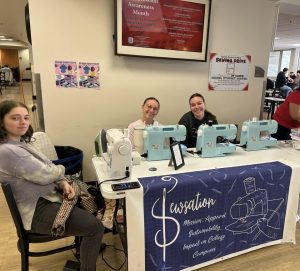Every student should have a few job searching tools in his or her belt, including eRecruiting, Twitter and Facebook.
That’s right – Twitter and Facebook.
Since the beginning of the year, the Smith Career Center has created profiles on both the popular social networking sites, tweeting and updating away from the first floor of Burgess Hall.
“With the current state of the job market, it is important that students take several different approaches to their job search,” said Jane Linnenburger, executive director of the SCC. “Networking with friends, family members, alumni and past work associates has always been an effective tool when job seeking, [but] sites such as LinkedIn and Facebook make networking much easier.”
The center’s Twitter updates focus on links to news stories to help guide students in their job and internship searches. Some recent tweets include a link to a Wall Street Journal story about Twitter as a job searching tool, a story on a hidden job market and a story on jobs with the federal government.
“Social networking … allows the Smith Career Center to reach students beyond the normal e-mails, flyers and presentations,” said Rick Smith, director of career development for the SCC. “Since we are new to this avenue of community-based communication, we are still learning about the potential of each individual resource.”
Smith said each site might reach a different section of the student body, so it’s important for all of them to be utilized.
“I’m not going to use Twitter in its classic sense – ‘what are you doing right now?’ – rather, I see it as a non-obtrusive method to reaching out to those who are interested without spamming the entire campus,” he said.
As SCC staff continue to experiment with the various tools, Smith said one thing’s for sure – communication between the SCC and students and employers and students will increase.
But the career center isn’t the only BU representation on the sites.
“Our audience is everyone: prospective students, current students, faculty, staff, alumni, parents and the community,” said Associate Vice President for Communication Shelley Epstein. “Our presence in the social Web will be more widely apparent to these audiences in the coming months.”
Admissions representatives will begin talking up the use of private networking tools to high school students as they attend visits at those high schools this year.
The school’s Twitter page is used primarily to spread messages from the administration. A post made on Tuesday morning encouraged Bradley’s followers, or those Twitter users who want to see the university’s updates on their own home pages, to vote for their favorite freshmen filmmaker. Other recent posts include University President Joanne Glasser’s update on swine flu and a university story about the Cullom-Davis library cafe.
Bradley’s Facebook page announces many similar topics as the Twitter one, but also allows fans of the university to check out upcoming events, like high school visit days.
“Social networking is here to stay,” Epstein said. “The tools, [such as] Facebook, Twitter … may change, but the concept isn’t going away. Bradley intends to be engaged in this and any other method to speak to its many audiences.”




